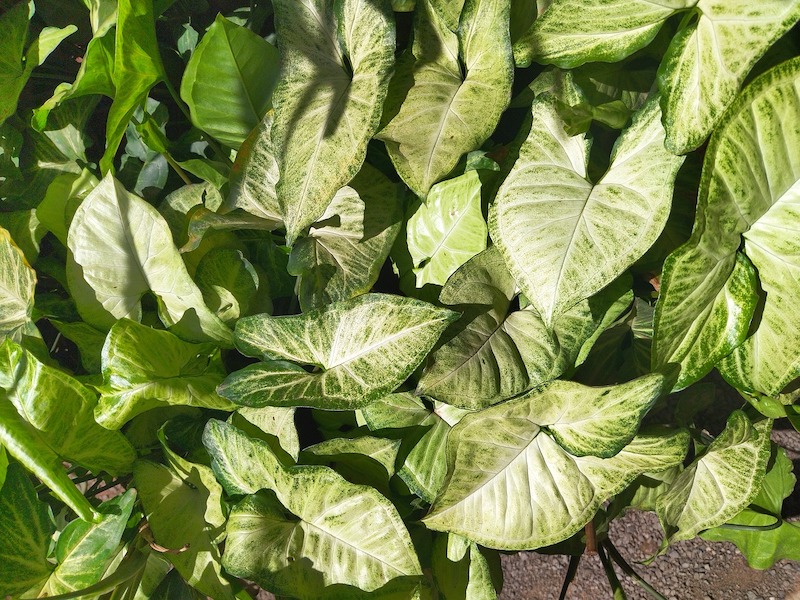Arrowhead Plants are tropical plants native to South America. These leafy plants can grow outdoors in zones 10 through 12 but are often grown as houseplants. Moving your Arrowhead Plant outdoors for the summer will encourage more growth and give your outdoor space some greenery. It is essential to ensure the conditions outside are ideal for the plant and to ease the transition to avoid shocking or killing the Arrowhead Plant.

When To Put Arrowhead Plant Outside
Wait until the temperature is consistently above 60 degrees F to move an Arrowhead Plant outdoors. Check the daily low temperature to avoid any overnight surprises. These plants require warm temperatures, and anything lower than 60 degrees will be damaging and possibly even fatal. Move an Arrowhead Plant back inside in late summer or early fall before the temperature reaches 60 degrees F.
When To Bring Arrowhead Plant Indoors
Slowly acclimate an Arrowhead Plant to outdoor living to make the transition easy. Moving the plant too quickly without preparing it can be stressful, causing leaf drop and possibly even death. Slowly acclimate your Arrowhead Plant to outdoor temperatures, humidity, and sunlight. The conditions outdoors are more intense and should be introduced slowly by bringing the plant indoors overnight or during peak heat during the first few weeks. This will allow Arrowhead Plant to adapt with minimal stress.
Bringing houseplants outdoors introduces them to pests they may not encounter otherwise. Preemptively spray the plant with horticultural oil, like neem oil, to ward off pests. Routinely inspect the Arrowhead Plant for signs of damage and make sure to check under the leaves.
Caring For Arrowhead Plant Outdoors
Arrowhead Plants need bright indirect sunlight. Houseplants are not acclimated to direct sunlight, so find a shady outdoor place. You may need to water the plant more often when it is outdoors because of the extra sunlight, wind and heat. Water when the top few inches of the potting mix are dry.
Try to place the plant in a protected area to shield the delicate leaves from direct sunlight, wind, and storms. Use a container that can handle the elements and has drainage so excess water can run through. Drainage holes are always necessary, especially if the plant is exposed to rainfall.
 |
Author Alison Cotsonas - Published 06-22-2023 |
